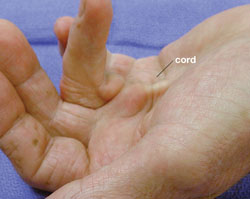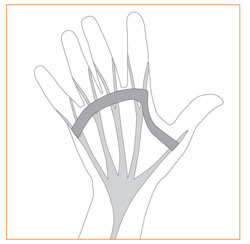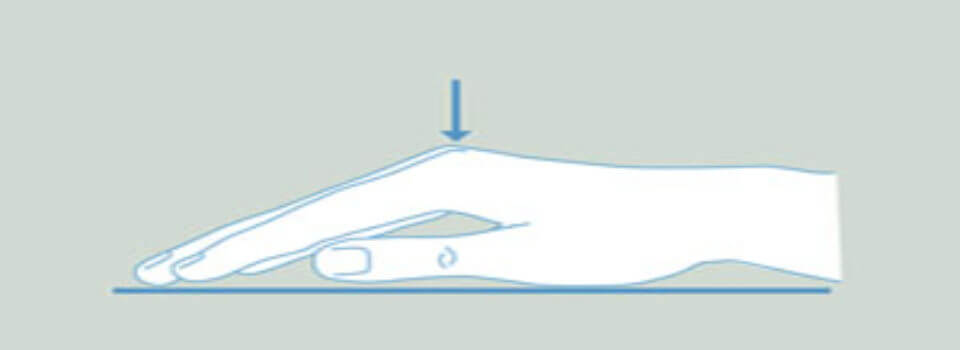 What is it?
What is it?
Dupuytren’s disease occurs when the tissue just under the skin, or the fascia, presents as an abnormal thickening. It occurs on the palm, but can also extend to the fingers. It is known as Dupuytren’s contracture when firm pits, nodules and cords develop, causing the fingers to bend towards the palm. The skin can become involved in the process, but the tendons are not. The disease can sometimes cause the skin on top of the fingers (knuckle pads) to thicken. It may even affect the nodules or cords on the soles of the feet (plantar fibromatosis)
What causes it?
Although the cause is not known, it may have to do with some biochemical factors of the fascia. The disease is more common in men over 40 and in those of northern European descent. There is no evidence that it’s caused by certain occupational conditions or injuries.
What are the symptoms?
 Lumps and pits on the palm are usually present. Oftentimes, the lumps are firm and adherent to the skin. The palm may develop thick cords which extend onto one or more fingers, usually the ring or little finger. Some mistake these cords for tendons, though they are actually in between the skin and tendons. The cords can cause the fingers to bend or contract. Many patients find that both hands are affected, although sometimes to different degrees.
Lumps and pits on the palm are usually present. Oftentimes, the lumps are firm and adherent to the skin. The palm may develop thick cords which extend onto one or more fingers, usually the ring or little finger. Some mistake these cords for tendons, though they are actually in between the skin and tendons. The cords can cause the fingers to bend or contract. Many patients find that both hands are affected, although sometimes to different degrees.
The nodules may become uncomfortable, though this usually fades as the disease is rarely painful. Patients are often first alerted to their condition when they begin to experience difficult placing their hand flat against a surface. Everyday activities such as washing, putting on gloves, or shaking hands may become increasingly difficult. The progression of the disease is neither predictable nor uniform across patients. More severe cases often occur in patients who develop the disease at an early age.
How do we diagnose it?
Tests are rarely necessary as your doctor can diagnose the disease simply by visually examining and feeling your hands. The surgeon will be looking for puckering on the palms and might press on various parts of your fingers and hands to check for tough knots or tissue.
 How is it treated?
How is it treated?
In cases where symptoms are mild, observation alone is sufficient. Severe cases can be treated with a variety of options which seek to straighten the affected finger(s). Available treatments include collagenase injections, needle aponeurotomy, or open surgery. For injection of collagenase, a small dose of medicine is injected into the tissue, allowing the doctor to manually straighten the finger. In needle aponeurotomy, a needle pierces the skin and cuts the diseased tissue. Both of these are in-office procedures. You and your surgeon can discuss both options in greater detail to choose the one that best suits you.


